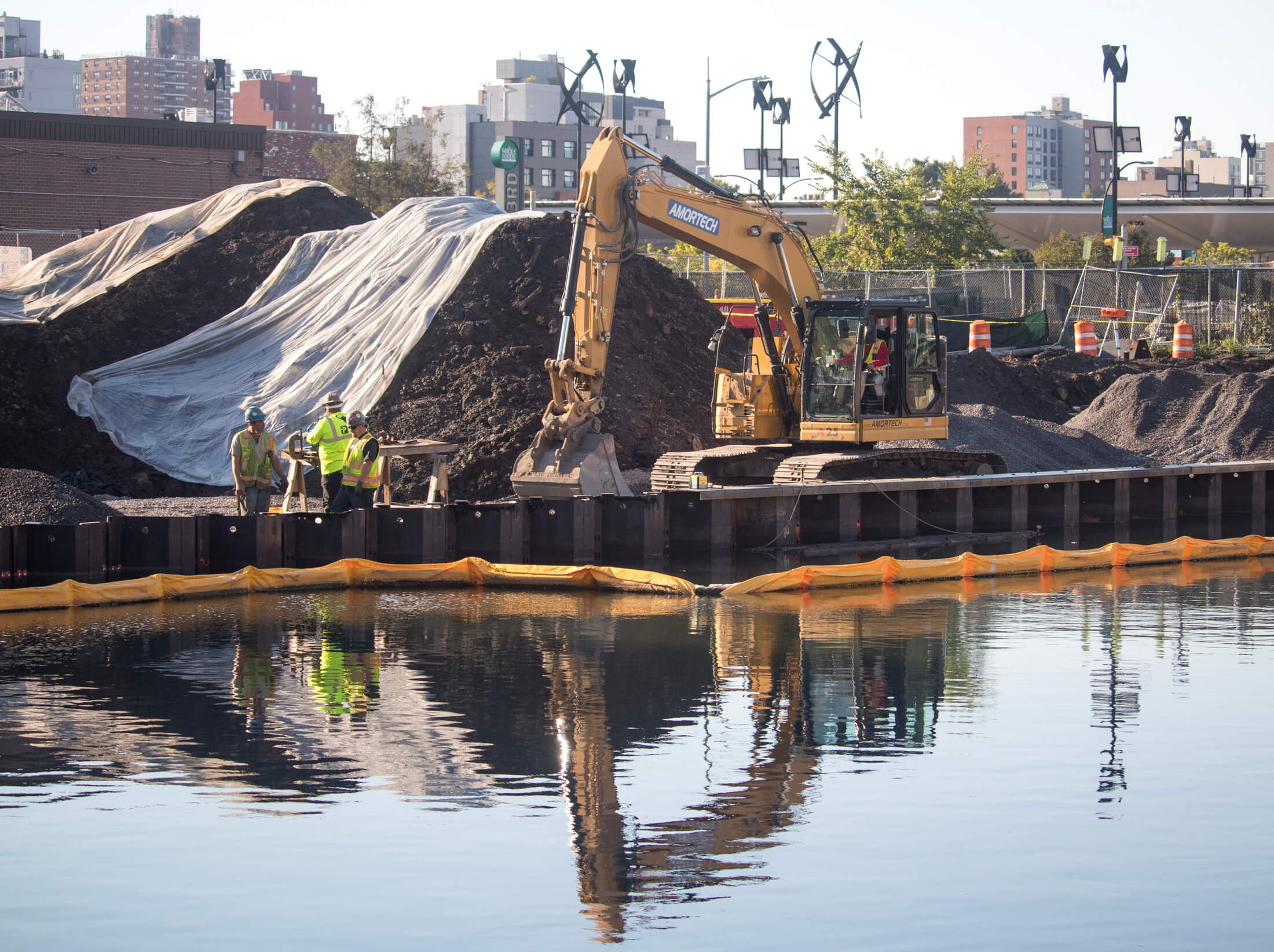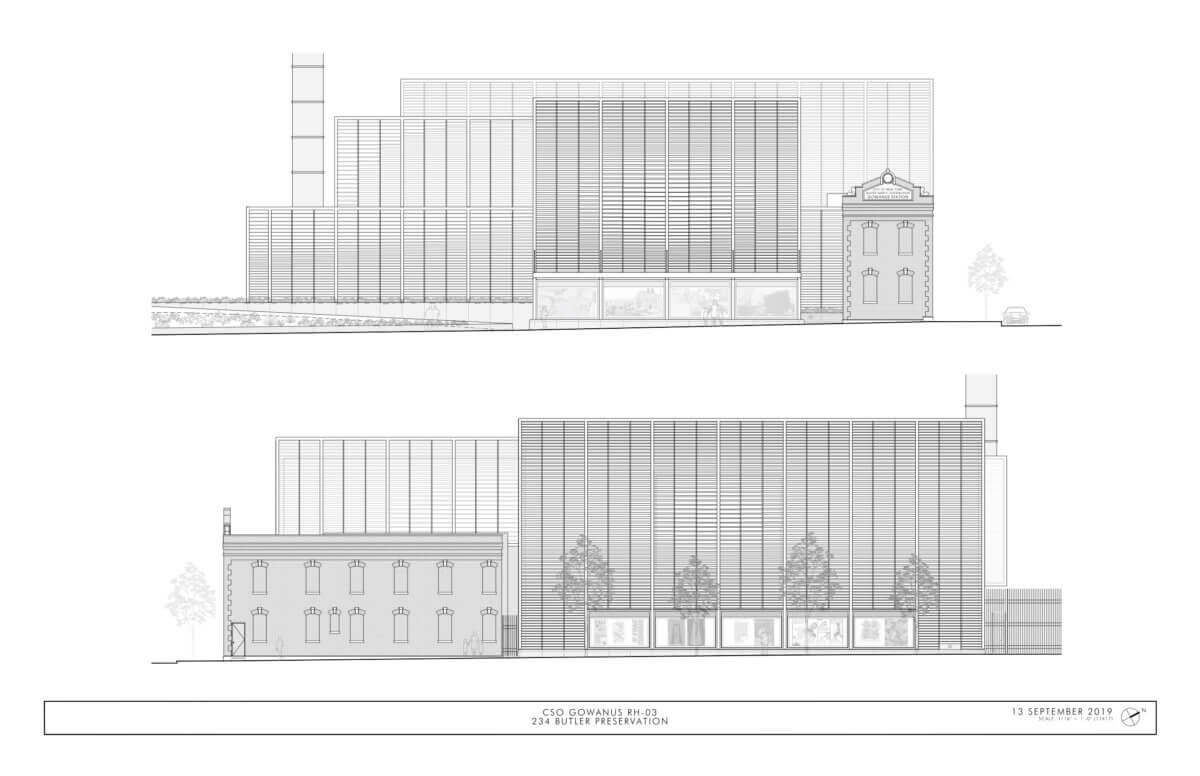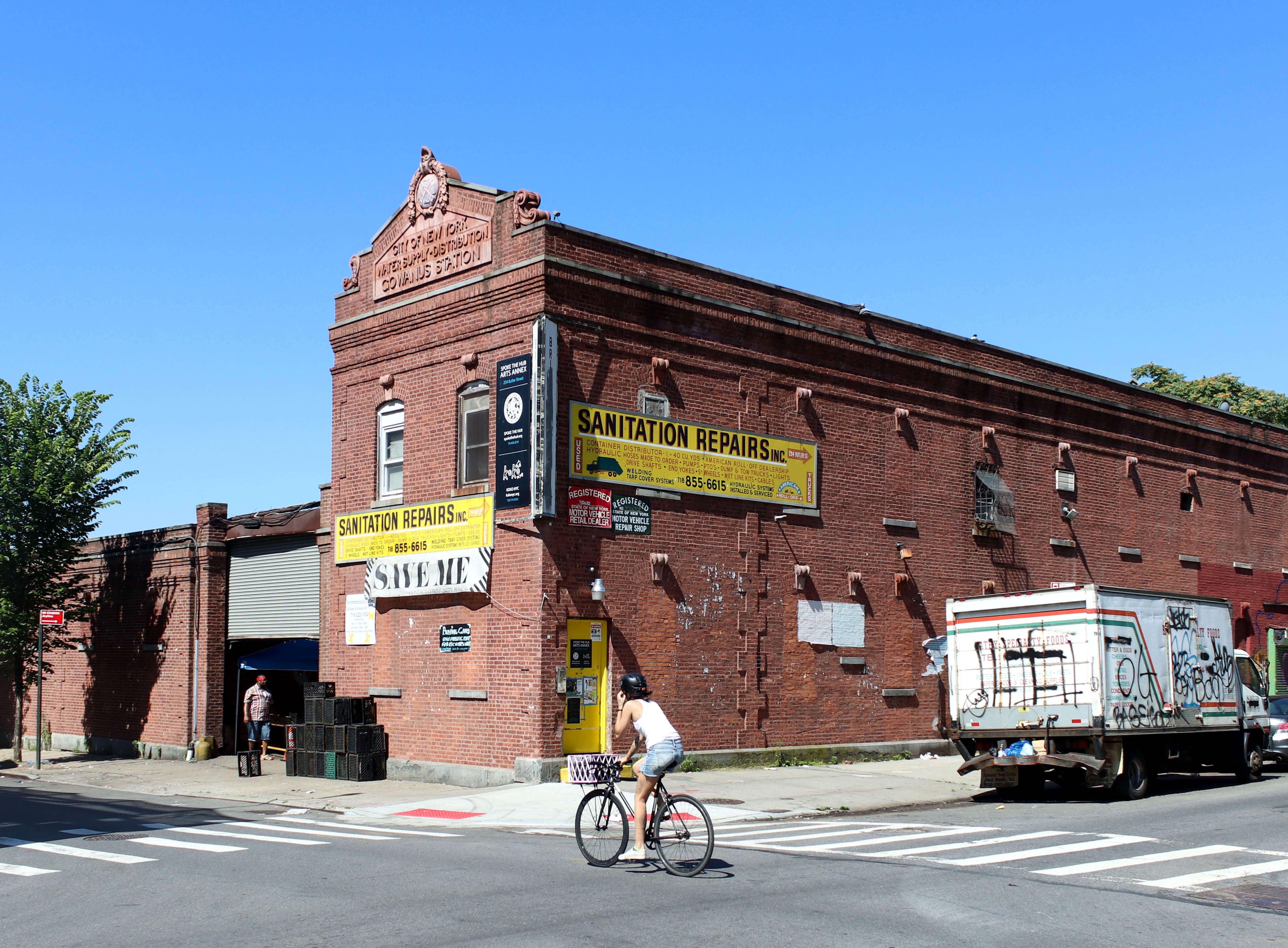EPA Nixes City Request to Delay Construction of Gowanus Retention Tanks
Environmental Protection Agency bigwigs denied a city request to delay construction of two massive stormwater retention tanks by up to 18 months due to COVID, saying the setback would cost taxpayers as much as $62 million.=

Photo by Susan De Vries
Environmental Protection Agency officials denied a city request to delay construction of two massive stormwater retention tanks by up to 18 months due to COVID, saying the setback would cost taxpayers as much as $62 million.
In a detailed letter obtained by Brooklyn Paper, the feds urged Department of Environmental Protection Commissioner Vincent Sapienza to prioritize the catch basins essential to the impending Gowanus Canal Superfund cleanup.
“EPA strongly believes that the near-term costs of the Gowanus [combined sewer overflow] controls must remain a DEP priority,” wrote EPA’s Regional Administrator Peter Lopez in the Nov. 6 missive. “Even as the upcoming dredging begins to cure the Canal’s century and a half of pollution, EPA is cognizant that the CSO portion of the Canal remedy is of equal significance to the community.”
DEP had sought to get a 12-month extension to construct an eight million gallon cistern at the head of the canal along with a 18-month delay for a four million gallon tank planned for further down the channel, citing revenue shortage due to lower water usage during the coronavirus pandemic.

The tanks — the larger of which is scheduled to be built by the end of 2032 — will reduce sewage and stormwater from flushing into the canal and help avoid recontamination after EPA’s contractors dredge and cap the channel’s gunk-filled bed, which the feds plan to start on Nov. 16.
The delays could cause a massive amount of gunk to run back into the canal on top of the remedy, roughly equivalent to a quarter of the polluted sediment to be dredged and capped during the cleanup’s first phase on the upper third of the waterway, according to EPA calculations.
Cleaning up that mess would cost Big Apple taxpayers some $50 million, the feds estimate.
Bringing in heavy machinery to remove the new dirt could also risk damaging the Superfund’s complex cap and filter system, causing toxins to be released again from below, the environmental guru warned.
On top of that, the overall bill for the cleanup project would balloon by $12 million due to interest and inflation, according to Lopez, who said the short-term savings aren’t worth the future costs.

“EPA’s financial analysis indicates that there would be only a nominal short-term benefit to DEP from the requested time extensions as far as DEP’s stated goal of gaining more flexibility in the next two fiscal years as a result of COVID-19 budgetary impacts,” the official wrote.
That $62 million would be in addition to the tank project’s total cost estimate of $1.3 billion.
In the rejection letter, the environmental guru added that the city has a history of “significantly” not complying with with EPA orders for the tanks since long before the pandemic, which federal officials have warned will incur “substantial” penalties.
An EPA spokesman did not provide more details about the penalties.
The agency highlighted DEP’s lack of progress with the smaller tank, which is slated to be installed near the Fourth Street Turning Basin.
Six years after EPA tasked the city to start designing that facility in 2014, the agency has yet to put forth a design, and in September tried to punt the project until the next fiscal year, which Lopez called “not acceptable.”
In 2018, DEP stalled progress on the whole tank project for the better part of two years, when they floated an alternative 16-million gallon tunnel proposal, which EPA eventually rejected.

The two agencies sparred again when the city tried to get away with using faux-aged bricks to rebuild the historic Butler Street Gowanus Station building as part of the upper tank facility.
On Oct. 8, DEP even issued a request for proposal for consultants to review and develop alternatives to the tank proposals, diverting valuable resources, according to EPA.
“DEP appears to be allocating procurement and budget resources, much needed in the CSO retention tank design effort, to altering the publicly vetted CSO remedy,” Lopez wrote.
Lopez said the city could reduce up to $130 million in costs to buy the property for the mid-canal tank by working with the feds and the land owner.
EPA prepared a “compressed” schedule with overlapping tasks that could ensure the tanks’s completion be at the same time as the canal dredging wraps up, and Lopez wants to meet with the agency soon to further discuss the timeline and compliance issues.
A spokesman for DEP fired back at the feds, saying they vastly underestimated the cost of the cleanup and slowed down the process when they insisted on real cinder blocks for the head house.
“From underestimating the cost of the project by $1 billion to delaying the work for more than 12 months to decide on the type of bricks to be used, the administration repeatedly acts against the interests of New Yorkers and the environment,” said Edward Timbers in a statement. “We are ready to move this critical project forward with partners who appreciate the complexity of the work and the budgetary impacts of the pandemic.”
Editor’s note: A version of this story originally ran in Brooklyn Paper. Click here to see the original story.
Related Stories
- Gowanus Canal Cleanup May Be Delayed Yet Again Over City Revenue Shortfall
- EPA Concerned About How Gowanus Rezoning Could Negatively Affect Canal Cleanup
- Locals Get a Refresher Course, With Few Answers, About the Proposed Gowanus Rezoning
Sign up for amNY’s COVID-19 newsletter to stay up to date on the latest coronavirus news throughout New York City. Email tips@brownstoner.com with further comments, questions or tips. Follow Brownstoner on Twitter and Instagram, and like us on Facebook.





What's Your Take? Leave a Comment